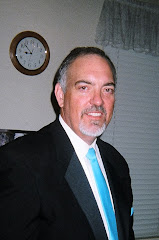Excellent organizations don’t just happen. A key aspect to their development is leadership, which is the topic for today’s blog.
Who is the best leader you have personally seen? I want you to get a mental picture of her or him. Think about how she or he acted, talked, thought. Do you have that picture in your mind? Okay; what are the characteristics that made him or her a great leader to you?
A recent article in HR World by John Hakala (http://www.hrworld.com/features/top-10-leadership-qualities-031908/) listed the top ten leadership qualities: vision, integrity, dedication, magnanimity, humility, openness, creativity, fairness, assertiveness, and a sense of humor. How does this list compare with the characteristics you identified for your ideal leader?
Someone once said that the best example of leadership is leadership by example. This brings an important aspect of leadership to mind: a great leader lives the espoused values of the organization he or she is trying to lead. Given that, the definition of a great leader is at least partially dependent on the organization being led. Exaggerating to make a point, the behaviors of an ideal gang leader is no doubt different than those of an ideal leader of a religious order. What both would have, I believe, is the embodiment and personification of the organization’s values and culture. They would lead by example because their most closely held and lived values and culture were perfectly aligned with the aspirations of the members of the organization they lead, or very nearly so.
Edgar Schein, one of the premier thought leaders about culture, made the point in his book Organizational Culture and Leadership that while leaders represent their organization’s culture, they also pay a major role in establishing the culture through their actions and how they interpret events. It is also their responsibility to redirect the organization if it drifts from the ideal:
But if cultures become dysfunctional, it is the unique function of leadership to perceive the functional and dysfunctional elements of the existing culture and to manage cultural evolution and change in such a way that the group can survive in a changing environment.
In fact Schein stated that one of the key differentiators between a manager and a leader is the issue of culture. Leaders help mold culture while managers or administrators operate within it.
Peter Vaill, in an article in Organizational Dynamics, cites three characteristics that all leaders of excellent organizations posses: they put in an extraordinary amount of time; they have very strong feelings about the organization’s purposes; and they focus on key issues and variables. It seems to me that these three variables transcend culture. I can’t imaging a great leader that didn’t spend an extraordinary amount of time thinking about and acting in behalf of the organization; that wasn’t passionate about why the organization exists and what it was trying to accomplish; finally, focusing on key issues and variables, rather than getting bogged down in the mundane or distracted by the extraneous. I agree with Vaill that these characteristics seem to be essential for an effective leader. They probably also transcend culture, although how the characteristics are actually manifest in behavior would undoubtedly differ.
One final thought on leadership. Leadership does not come only from the titular head of an organization. John Quincy Adams is quoted as having said, “If your actions inspire others to dream more, learn more, do more and become more, you are a leader.” You will notice this statement makes no reference to organizational status. My guess is as you think about the traits that make a great leader, you will find they are also (at least in large part) the same traits that make a great organizational member. All of us have the opportunity, and responsibility, to develop and use leadership characteristics in making our organizations excellent, no matter our title or formal role.
Punto Banco Baccarat Betting Limits Review
1 week ago




No comments:
Post a Comment